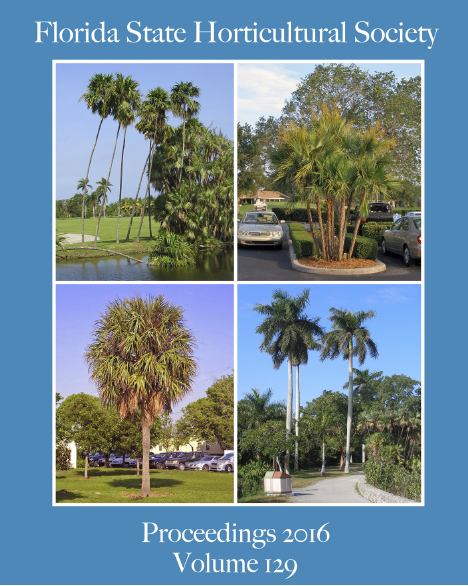Seasonal Variation in Preharvest Fruit Drop of Florida Oranges in Relationship to Weather and Other Factors
Abstract
Variation in preharvest fruit drop of processing orange, Citrus sinensis, in Florida is well known. Preharvest fruit drop has been monitored by the USDA–National Agricultural Statistical Service (NASS) since 1960, but causes for year to year variation were not evaluated. An understanding of causes was thought to be helpful in understanding how much of the current heavier preharvest fruit drop should be assigned to the serious disease huanglongbing (HLB) and how much to factors leading to natural preharvest fruit drop. Statewide and citrus production district fruit drop data, yields, and tree counts for early-mid and late season cultivars were obtained from the U.S. Department of Agriculture–National Agricultural Statistical Service (USDA–NASS) for 51 years, from 1960 through 2011. Statewide and district monthly minimum and maximum average temperatures and total rainfall were obtained from the National Oceanographic and Atmospheric Administration (NOAA) records. Yields were converted to mature tree equivalents; bloom dates were obtained using the Florida Citrus Flowering Monitoring System. Multiple regression analyses were run for early-midseason and late season orange fruit drop against all other variables. Over 51 years, there was a significant but small reduction in preharvest drop for early-mid and late season cultivars. For early-midseason oranges, 69% of the year to year variation in preharvest fruit drop was significantly associated with six variables. Besides year, three of these variables were minimum monthly temperatures in late spring and early summer. For late season oranges, 65% of the variation in preharvest drop was significantly associated with six variables. Besides year, two of these were monthly average maximum temperatures in January and monthly rainfall in February. Previous and current yields were associated with variation in percentage fruit drop of the current year for both early-midseason and late cultivar drop. Temperature and rainfall variables might be associated with advancing maturation of the fruit which could have made it more vulnerable to drop, but no definite cause and effect could be ascribed to the data analyses.

